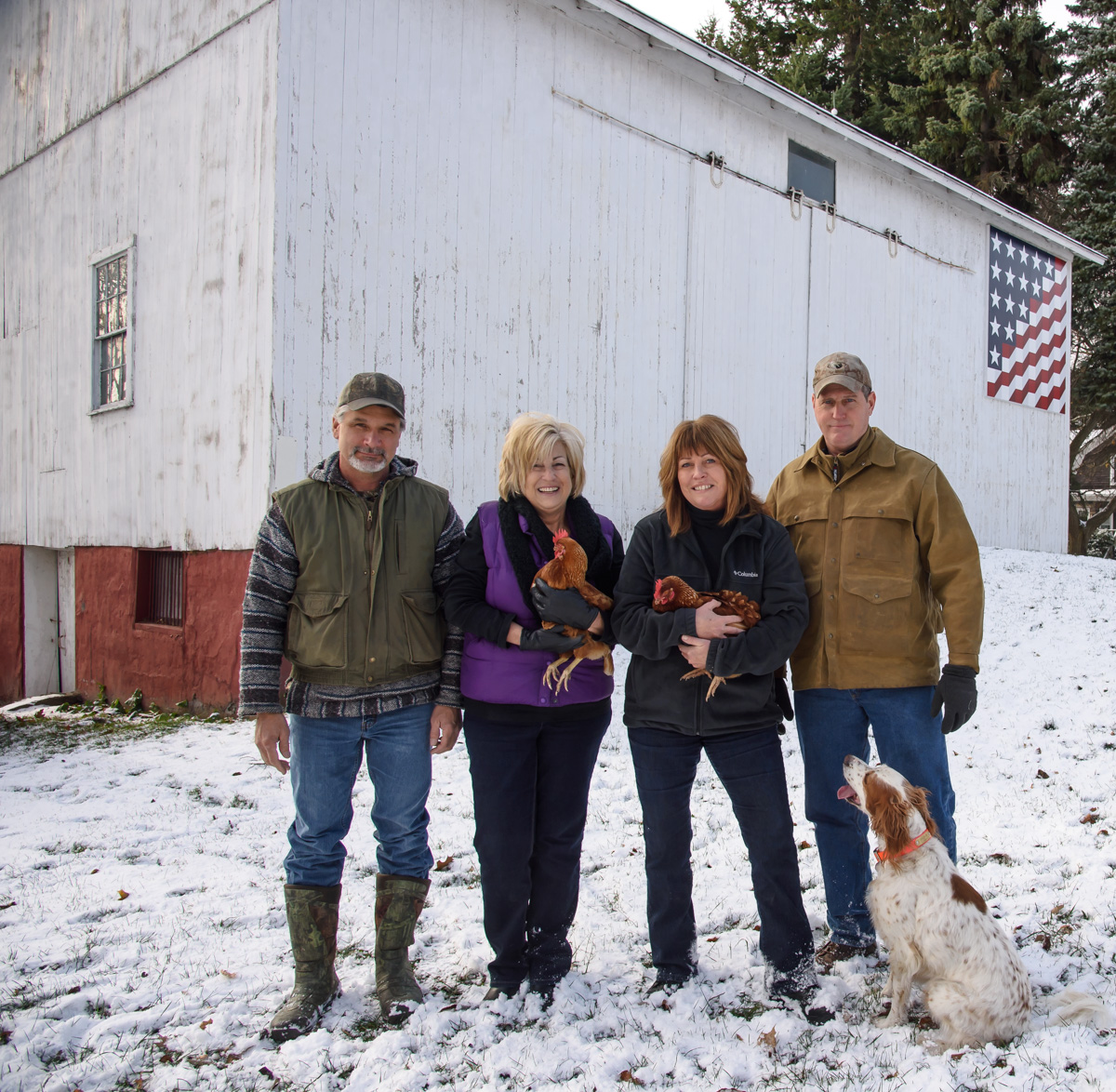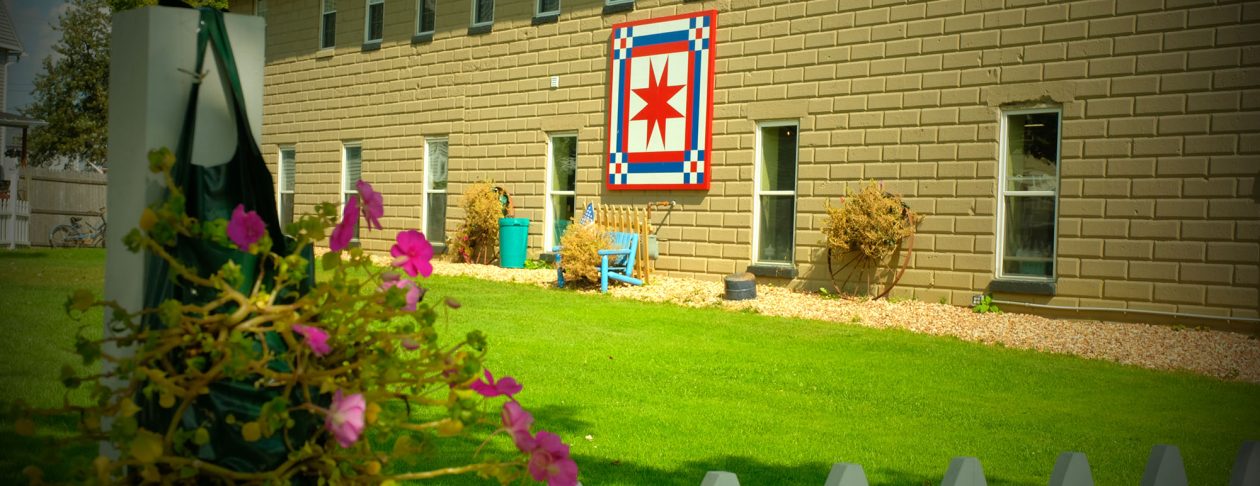 Address:
Address:
2630 South Ridge West (Route 84), Ashtabula
Directions:
From Interstate 90, exit at Route 45; head north on 45 to Route 84. Turn right (east) toward farm, across from Sanborn Road.
 The Quilt:
The Quilt:
Freedom Farm, 8×8.
The Artist:
Jeff Scribben, Artistic Woodworks
The farm and barn:
Freedom Farm was so named “in recognition of the founding principles that our country was built upon, as well as the personal freedom we have been granted to pursue our dream of self-sustainability by living and working on our own farm.”
